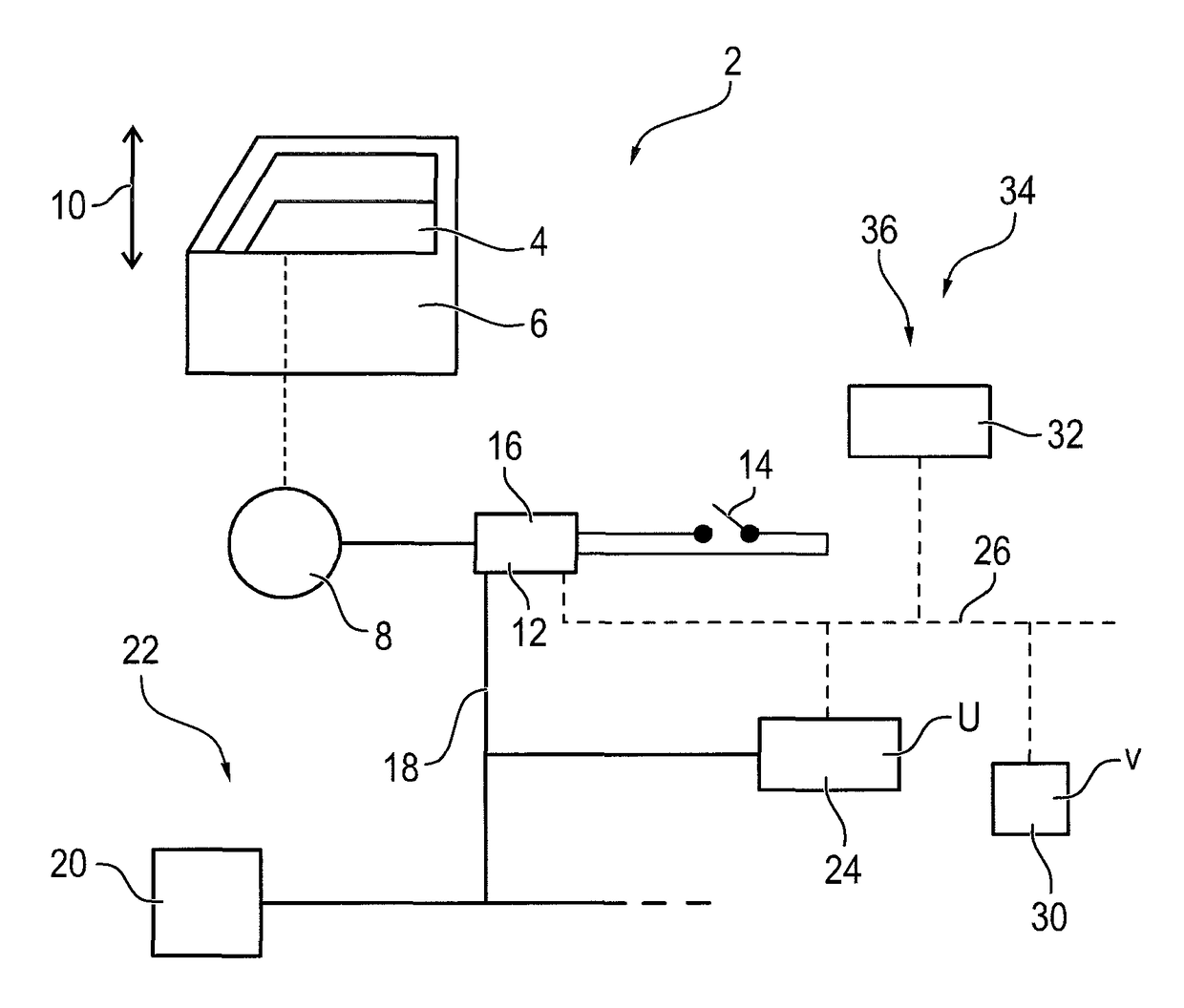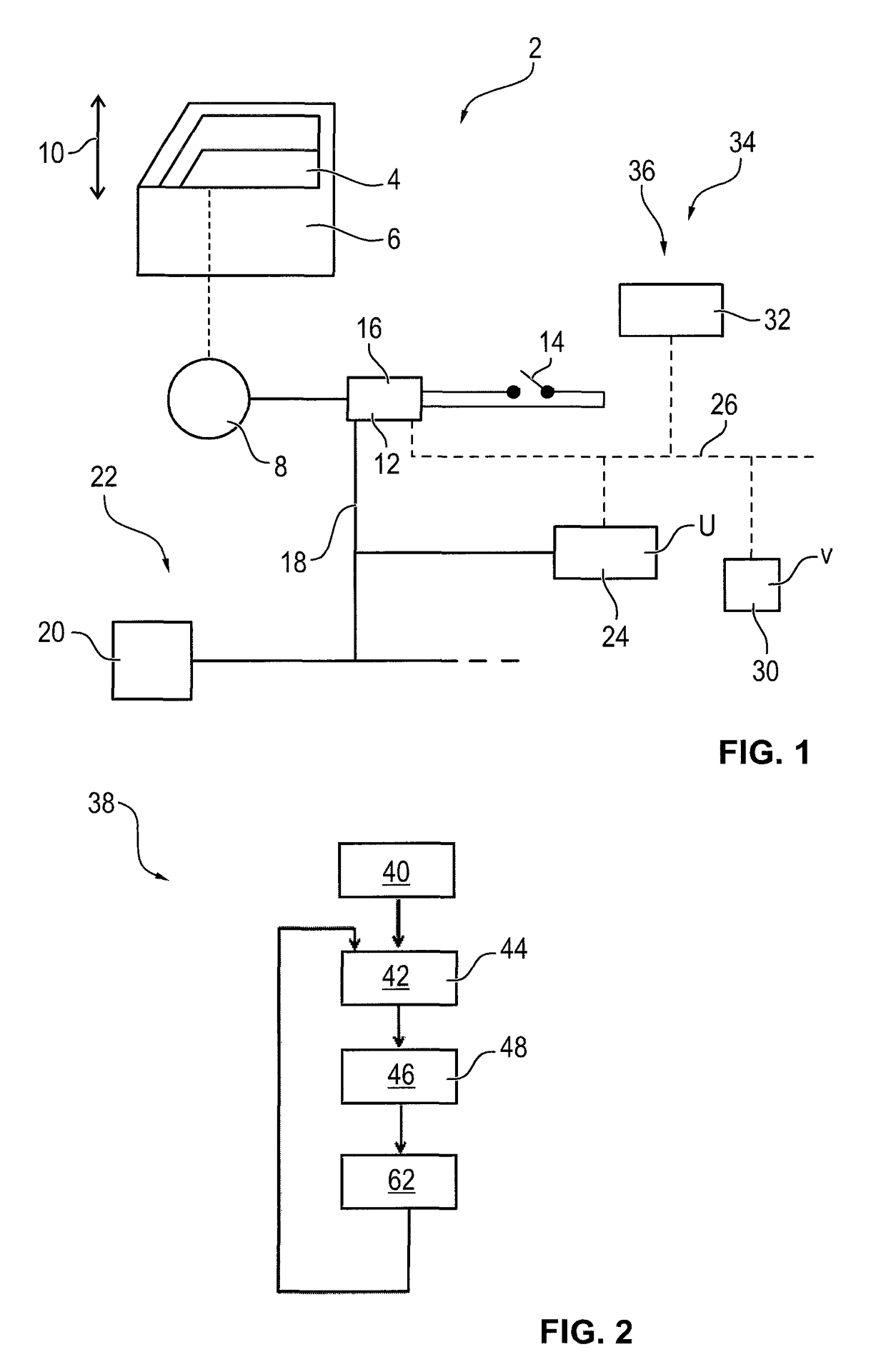Method for operating an electromotive adjusting device
a technology of electromotive and adjusting device, which is applied in the direction of power-operated mechanism, door/window fitting, wing accessories, etc., to achieve the effect of reducing the adjustment time and improving the acoustic impression
- Summary
- Abstract
- Description
- Claims
- Application Information
AI Technical Summary
Benefits of technology
Problems solved by technology
Method used
Image
Examples
Embodiment Construction
[0036]FIG. 1 schematically shows an electric window opener 2 with a window pane 4, which is integrated in a door 6 of a motor vehicle. The window pane 4 is moved along an adjustment path 10 by means of an electric motor 8. For this purpose, a worm wheel of a worm gear (not shown) of the electric window opener 2 is operatively connected with a worm associated with the electric motor 8 on the shaft side, the rotational movement of the electric motor 8 being converted into a translational movement of the window pane 4 by means of the worm wheel and by means of a cable drum or a spindle.
[0037]The electric motor 8 is controlled by means of a control unit 12, which is activated via a button 14 by a user of the motor vehicle. Within the control unit 12 there is a speed control 16 for the electric motor 8. In this case, by means of variation of the pulse / pause ratio, the electrical energy supplied to the electric motor 8 is controlled / regulated. The control unit 12 also has an algorithm for...
PUM
 Login to View More
Login to View More Abstract
Description
Claims
Application Information
 Login to View More
Login to View More - R&D
- Intellectual Property
- Life Sciences
- Materials
- Tech Scout
- Unparalleled Data Quality
- Higher Quality Content
- 60% Fewer Hallucinations
Browse by: Latest US Patents, China's latest patents, Technical Efficacy Thesaurus, Application Domain, Technology Topic, Popular Technical Reports.
© 2025 PatSnap. All rights reserved.Legal|Privacy policy|Modern Slavery Act Transparency Statement|Sitemap|About US| Contact US: help@patsnap.com



